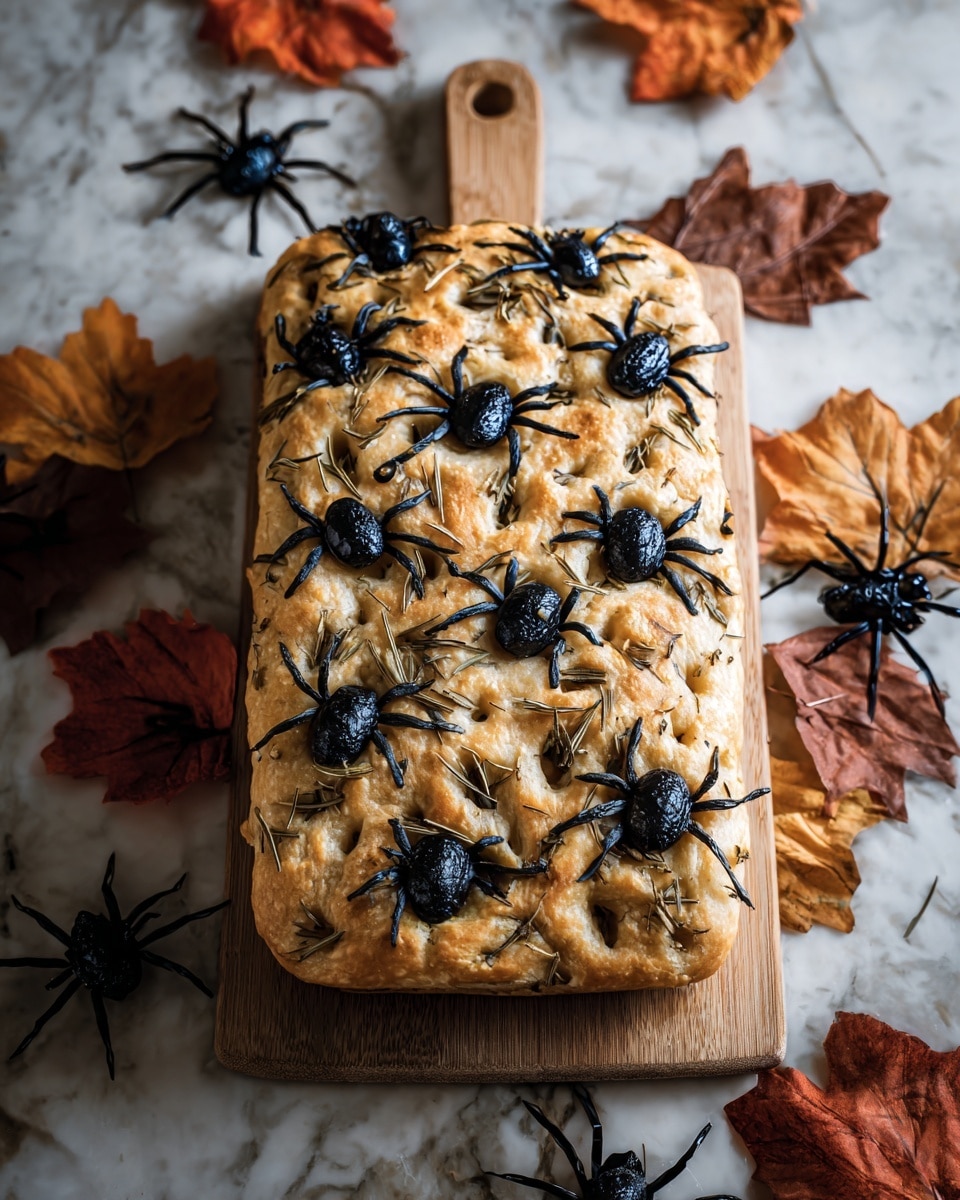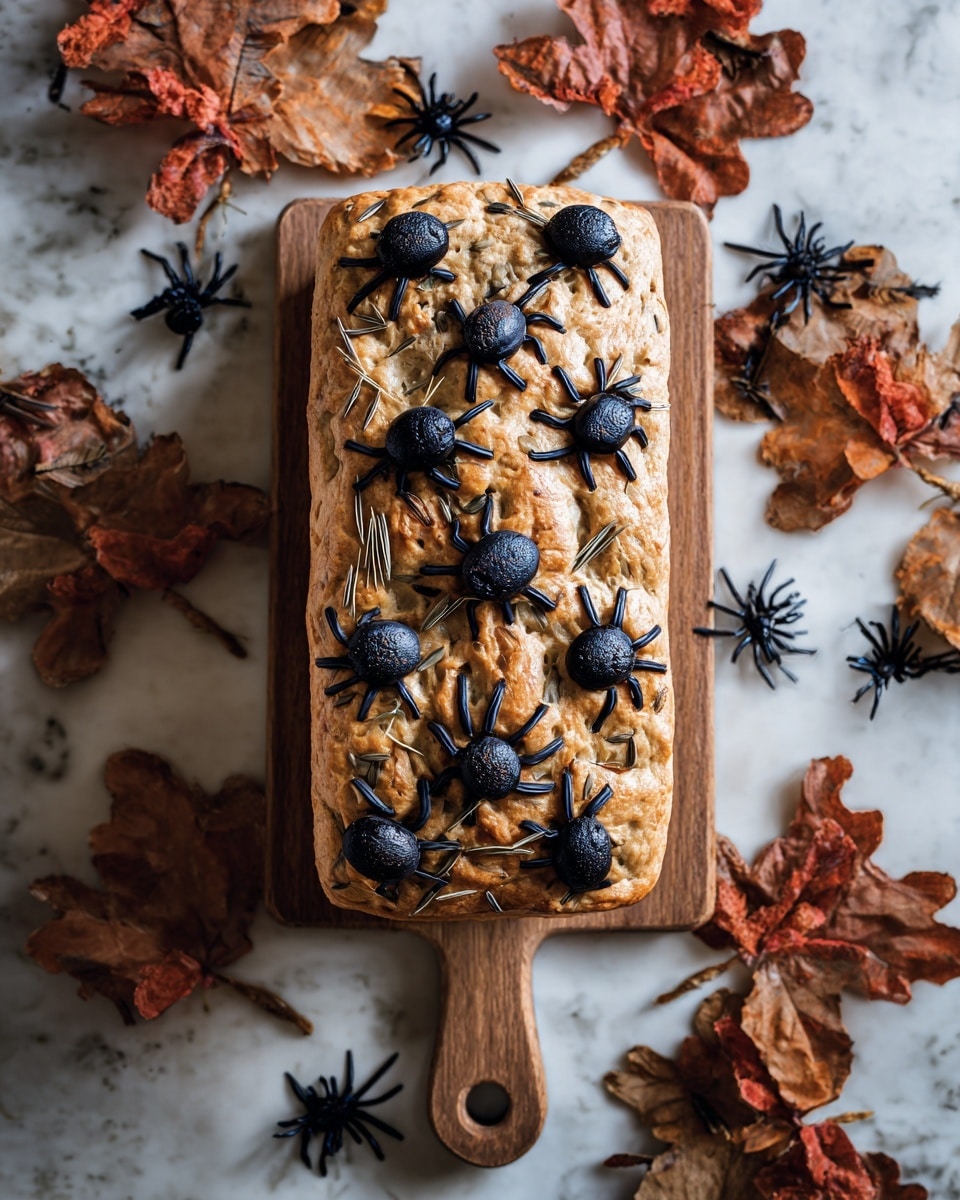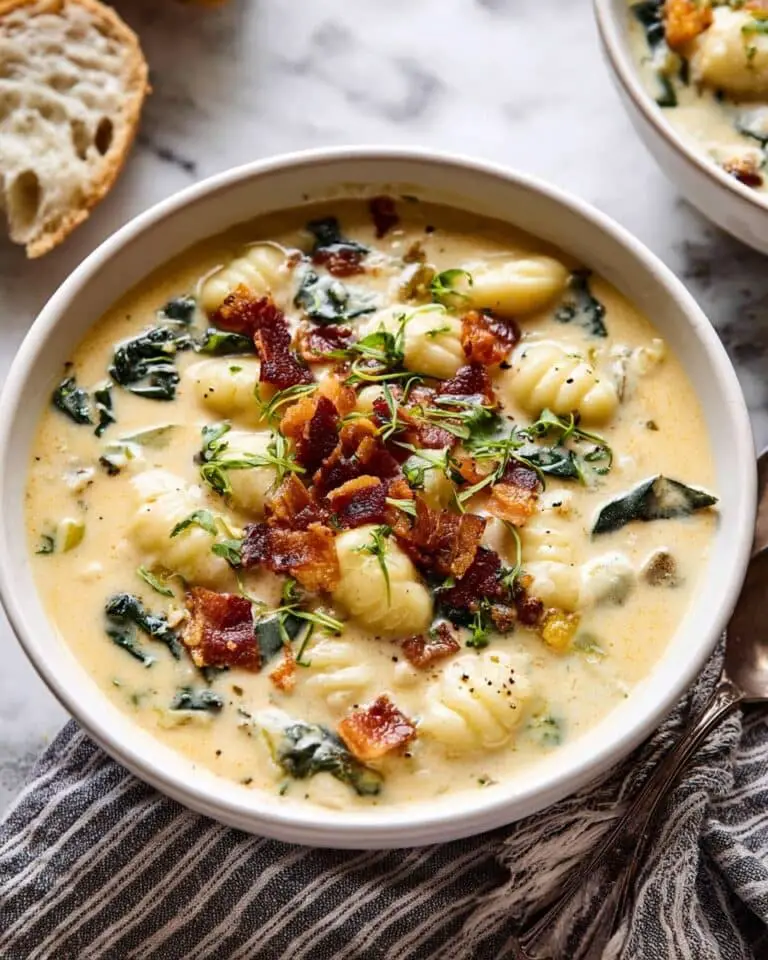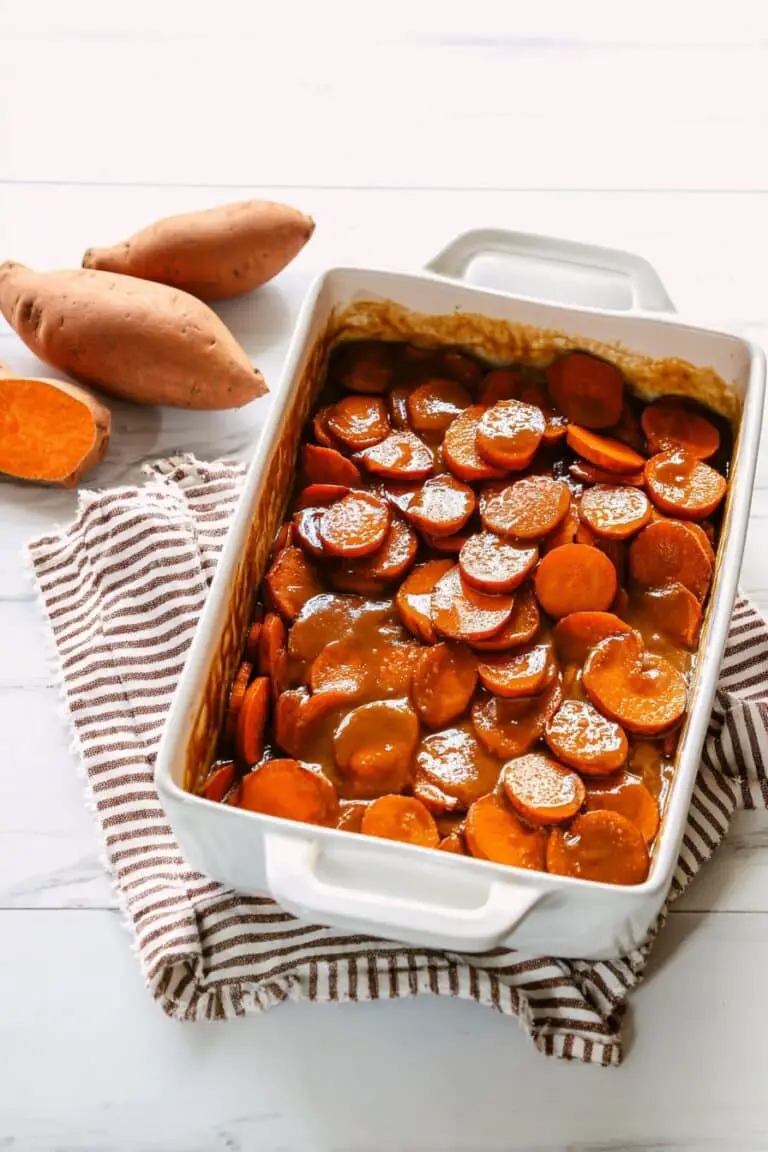If you’re craving something rustic, flavorful, and just a little bit fun, you’re going to love this Black Olive Spider Focaccia Recipe. It’s not your average focaccia—this one has these quirky little olive spiders perched right on top, adding a burst of briny goodness and a whimsical touch that makes it perfect for everything from cozy snacks to party starters. Stick with me, and I’ll share how to make this fan-freaking-tastic bread that’s crispy on the outside and pillowy soft inside, with bursts of olive and fragrant rosemary in each bite.
Why You’ll Love This Recipe
- Playful Presentation: Those olive spiders make your focaccia not just delicious, but totally Instagram-worthy and fun for guests.
- Rich Flavor Depth: A slow, cold ferment brings out a complex, chewy crumb that’s hard to beat in homemade bread.
- Simple, Accessible Ingredients: You won’t need any fancy stuff—just good olive oil, flour, and olives you can find at your local market.
- Perfect Texture: Crispy edges meet tender, fluffy dough inside; it’s the kind of bread you’ll find yourself sneaking bites of all day.
Ingredients You’ll Need
For this Black Olive Spider Focaccia Recipe, the ingredients are pretty straightforward but chosen to highlight and balance each other beautifully. Make sure to pick good quality extra virgin olive oil and olives that speak to your palate—those little touches really make the difference.
- Warm Water: Essential for activating your yeast properly—think warm bath, not hot shower.
- Active Dry Yeast: This little powerhouse makes your dough rise beautifully; always check expiration for best results.
- Olive Oil: Use high-quality extra virgin olive oil for flavor and texture—it’s the star in focaccia.
- OO Flour (00 Flour): This finely ground flour gives you that soft, elastic dough classic to focaccia.
- Salt: Balances the bread’s flavor perfectly—plus a bit more for sprinkling on top at the end.
- Black Pitted Olives: The main character for the spiders and flavor bursts; I prefer ones with a firm texture.
- Dried Rosemary: Brings that aromatic Mediterranean vibe that pairs so well with olives and olive oil.
Variations
I love how versatile this Black Olive Spider Focaccia Recipe is, so don’t hesitate to make it your own. I often tweak it depending on the season, or just what I have on hand—you’ll find that changing up toppings or flours keeps it exciting every time you make it.
- Herb Variations: I sometimes swap rosemary for thyme or add fresh basil for a different aromatic punch—my family goes crazy for the basil version in summer.
- Olive Substitutions: Feel free to mix in green olives, or even chopped sun-dried tomatoes for a twist; I discovered this trick when wanting a bit more color contrast.
- Dietary Modifications: For a gluten-free take, try a blend designed for bread baking and expect a slightly different texture but just as tasty!
- Cheese Addition: A light sprinkle of crumbled feta or grated parmesan adds a salty, melty surprise I sometimes sneak in.
How to Make Black Olive Spider Focaccia Recipe
Step 1: Activate Your Yeast
Start by pouring warm water—between 105-110°F, like a warm bath—into a measuring cup. Sprinkle the yeast over the top and give it a quick stir. This is where the magic begins: within about 10 minutes, your yeast should be foamy and bubbly, showing it’s alive and ready to work. I used to rush this step and ended up with flat bread, so trust me—it’s worth the wait to get it right.
Step 2: Mix the Dough
In a large bowl, whisk together your flour and salt. When the yeast is ready, pour it over the flour along with your olive oil. I like to get my hands involved here—it’s part of the fun! Mix everything until a shaggy dough forms, then give it a firm knead inside the bowl for 20–30 seconds. Don’t worry if it’s sticky or messy; focaccia dough is supposed to be hydrated. Just keep going until it’s more of a cohesive ball.
Step 3: First Rise
Cover your bowl loosely with a towel and let the dough rise for 2 to 2 1/2 hours, until it’s doubled in size. I learned that patience here really adds flavor and texture—rushing the rise leaves the bread lacking that classic lightness.
Step 4: Cold Fermentation for Flavor
After punching down the dough, transfer it into an olive oil greased glass bowl, cover tightly with plastic wrap, and refrigerate overnight or up to 5 days. This slow ferment boosts flavor and yields a more complex crumb. I always do this step when I have the time; it truly transforms the bread.
Step 5: Final Rise and Shape
Bring the dough back to room temperature by transferring it to another olive oil greased bowl and letting it rise 2-3 hours until doubled again. When your dough is ready, slather a casserole dish generously with olive oil to help with that incredible crispy bottom crust.
Carefully place your dough into the dish—don’t deflate it! With olive oil on your hands and over the dough’s surface, gently press your fingers deep into the dough to create those signature focaccia dimples, stretching it toward the edges of the dish.
Step 6: Create Your Olive Spiders & Add Toppings
Here’s where the fun really starts! Take your black olives and slice one lengthwise in half for each spider’s body. Then slice other olives into rounds and halve them for the spider legs. Press the olive pieces gently into the dough—don’t push too hard or you’ll knock out the air pockets you’ve worked so hard to build.
Sprinkle dried rosemary and a little freshly ground salt over the top for that classic Mediterranean fragrance and taste. This is one step I never skip because it elevates the bread to something truly special.
Step 7: Bake to Golden Perfection
Pop your focaccia into a 450°F oven for about 20 minutes, or until the top is beautifully golden brown and crispy. I love to watch the edges bubble up and crisp—there’s nothing quite like the smell of baking bread filling the whole house.
Let the focaccia cool before removing. To keep it intact, I run a thin metal spatula gently around the edges and underneath. Some spots tend to stick to the bottom—that’s totally normal! Just be patient and careful here.
Pro Tips for Making Black Olive Spider Focaccia Recipe
- Ideal Water Temperature: Too hot can kill your yeast, too cold slows it down; I keep a kitchen thermometer handy for this step.
- Use Gloves or Oil Hands Generously: When working with sticky focaccia dough, olive oil on your hands prevents sticking and tearing.
- Don’t Skip the Cold Fermentation: I noticed a big flavor upgrade after I embraced this technique; it’s worth the wait!
- Careful with Olive Placement: Gently press olives in—too much pressure deflates the dough and ruins texture.
How to Serve Black Olive Spider Focaccia Recipe
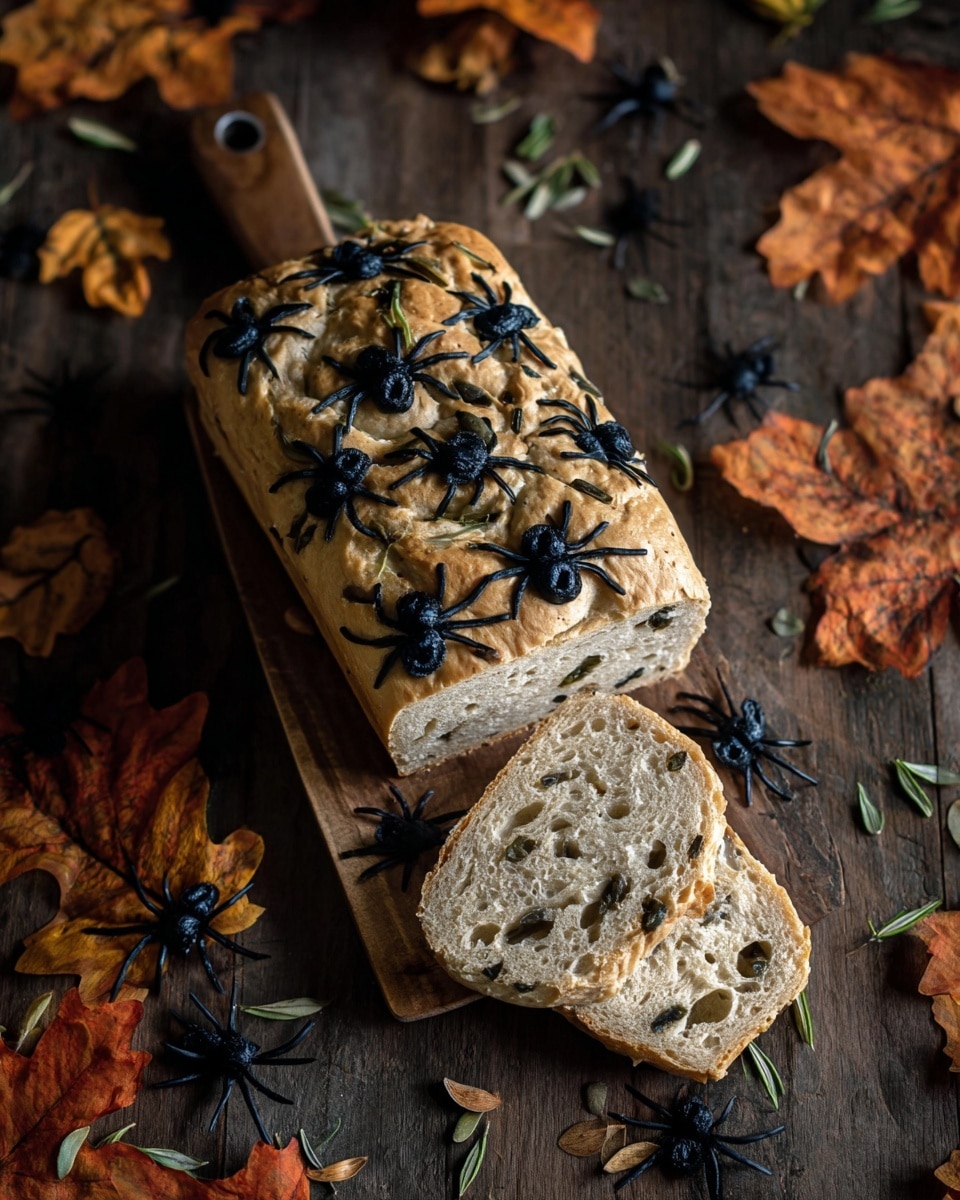
Garnishes
I usually keep garnishes simple—a drizzle of extra virgin olive oil right before serving, and sometimes a sprinkle of flaky sea salt for crunch. A fresh scattering of chopped parsley or basil adds a pop of color and freshness that brightens up the deep olive tones.
Side Dishes
This focaccia pairs wonderfully with a tangy tomato soup or a light arugula salad dressed in lemon vinaigrette. I also love serving it alongside a cheese and charcuterie board for gatherings—nothing beats tearing off a warm, chewy piece to complement creamy cheeses.
Creative Ways to Present
For Halloween or themed parties, the black olive spiders become an adorable, spooky centerpiece. Arrange slices on a wooden board surrounded by fresh herbs and olives. You can even serve small individual squares with a single olive spider on top for charming finger food that guests absolutely love.
Make Ahead and Storage
Storing Leftovers
I recommend storing leftover focaccia at room temperature wrapped loosely in parchment paper and then inside a sealed container to keep the crust crisp but the inside moist. I’ve kept it fresh for up to two days this way without losing that homemade charm.
Freezing
If you want to freeze your Black Olive Spider Focaccia, slice it first and wrap individual pieces in plastic wrap and foil. When you’re ready, you can pull out exactly how much you need—I do this often for easy lunches or snacks on busy days.
Reheating
For reheating, I pop slices in a preheated oven at 350°F for about 5-7 minutes to restore that crispy crust and fresh-baked aroma. A quick toast in a skillet works too if you’re in a hurry, and it keeps the olive spiders intact.
FAQs
-
Can I use active dry yeast substitution for instant yeast in this recipe?
Yes, you can use either active dry yeast or instant yeast, though activating active dry yeast in warm water first is important to make sure it wakes up, while instant yeast can be mixed directly with your flour. This Black Olive Spider Focaccia Recipe specifically activates active dry yeast to ensure the best rise and texture.
-
What’s the best way to shape the dough without deflating it?
Use plenty of olive oil on your hands and gently stretch the dough inside the greased pan, pressing your fingers in to create dimples. Avoid kneading or punching the dough at this stage to preserve the lovely air pockets that give focaccia its lightness.
-
How do I avoid sticking when baking focaccia in a glass dish?
Generously oil the bottom and edges of your glass dish before placing the dough and again over the top. This extra olive oil creates a barrier that helps the bread release easily after baking—plus it adds that delicious crispy crust.
-
Can I make this focaccia without the olive spiders?
Absolutely! The olive spiders are a fun decorative touch, but you can simply scatter olives or other toppings evenly instead. The flavor and texture of the focaccia will still be outstanding.
-
How long does this focaccia keep fresh?
Stored properly at room temperature, this focaccia stays fresh for up to two days. Beyond that, I suggest freezing leftovers to preserve flavor and texture.
Final Thoughts
This Black Olive Spider Focaccia Recipe has become a favorite in my kitchen—not just because it’s delicious, but because it always sparks a little joy when I pull those playful olive spiders out of the oven. Whether you’re making it for a casual meal or a special occasion, you’ll find it to be a crowd-pleaser with that perfect balance of savory olive flavor, rosemary aroma, and tender crumb. Give it a try and I promise, you’ll want to keep this recipe in your baking rotation just like I do. Happy baking, friend!
Print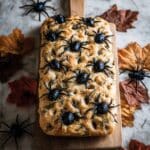
Black Olive Spider Focaccia Recipe
- Prep Time: 20 minutes (plus 2-2.5 hours initial rise and overnight refrigeration)
- Cook Time: 20 minutes
- Total Time: Approximately 24 hours (including refrigeration and rises)
- Yield: 1 loaf (8×11 inch pan serving 8-10)
- Category: Bread
- Method: Baking
- Cuisine: Italian
- Diet: Vegetarian
Description
This Black Olive Spider Focaccia is a visually striking and flavorful Italian flatbread, perfect for Halloween or any occasion that calls for a fun twist. Featuring fluffy, olive oil-rich dough topped with black olives crafted into spider shapes, fragrant dried rosemary, and a sprinkle of coarse salt, this focaccia combines rustic charm with delicious Mediterranean flavors.
Ingredients
For the Dough
- 1 3/4 cup warm water (105-110°F)
- 2 1/4 tsp active dry yeast
- 2 tbsp olive oil, plus more for greasing and topping
- 4 cups OO (00) flour
- 2 tsp salt
For the Toppings
- 1/2 cup black pitted olives
- Dried rosemary for topping
- Freshly ground salt for topping
Instructions
- Activate the Yeast: In a measuring cup, combine the warm water (105-110°F) with the active dry yeast. Stir lightly to incorporate and let it sit for up to 10 minutes, until it becomes bubbly and shows signs of activation.
- Prepare the Dough Base: In a large mixing bowl, combine the OO flour and salt, stirring to mix evenly.
- Mix Dough: Pour the active yeast mixture over the flour along with 2 tablespoons of olive oil. Using your hands, mix until a shaggy dough forms.
- Knead the Dough: Knead the dough inside the bowl for 20-30 seconds until it forms a workable ball.
- First Rise: Cover the bowl with a towel and let the dough rise for 2 to 2 1/2 hours, or until it has doubled in size.
- Refrigerate for Flavor: Punch down the dough and place it in a large, olive oil-greased glass mixing bowl. Cover with plastic wrap and refrigerate overnight or up to five days to develop flavor.
- Second Rise: When ready to bake, punch down the dough and transfer it to another olive oil-greased mixing bowl at room temperature. Let it rise again for 2-3 hours until doubled in size.
- Prepare for Baking: Preheat the oven to 450°F. Generously oil an 8×11 glass casserole dish on the bottom and sides.
- Shape the Dough: Place the risen dough into the prepared dish, being careful not to deflate it. Drizzle more olive oil on top and your hands, then press your fingers deeply into the dough to create dimples as you stretch it to the edges of the dish.
- Create Olive Spiders: For the spider shapes, slice black olives lengthwise in half for the bodies. Then slice olives into rounds and halve several rounds for legs. Press these olive pieces gently into the dough so they stick.
- Add Final Toppings: Sprinkle dried rosemary and freshly ground salt over the dough and olive spiders.
- Bake: Bake the focaccia in the oven for 20 minutes, or until the top is nicely golden brown.
- Cool and Remove: Allow the focaccia to cool before removing it from the dish. If any parts stick to the bottom, use a metal spatula carefully around the edges and underneath to lift it out in one piece.
Notes
- Ensure your water is between 105-110°F to effectively activate the yeast; hotter water can kill it.
- Overnight refrigeration helps develop better flavor and texture in the dough.
- Use olive oil generously to keep the focaccia moist and to prevent sticking.
- Press the fingers deeply to make traditional focaccia dimples where the flavors can pool.
- Shape the olive spiders carefully to add a fun decorative element without deflating the dough.
- Cool the focaccia fully before attempting to remove to avoid tearing.
Nutrition
- Serving Size: 1 slice (approx. 1/8 of loaf)
- Calories: 210
- Sugar: 1g
- Sodium: 320mg
- Fat: 7g
- Saturated Fat: 1g
- Unsaturated Fat: 6g
- Trans Fat: 0g
- Carbohydrates: 30g
- Fiber: 2g
- Protein: 5g
- Cholesterol: 0mg

